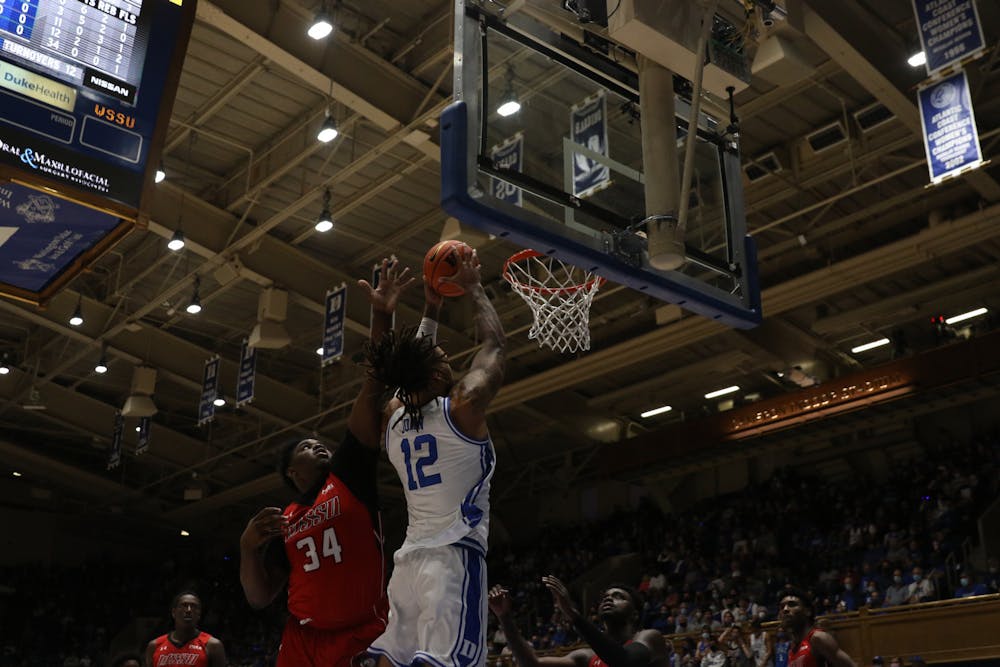Ahead of No. 1 Duke men's basketball's Big Ten/ACC Challenge matchup with Ohio State, the Blue Zone previews three aspects of the game that will be pivotal in deciding its outcome:
Eyes on Liddell
Ohio State has a deeper rotation than last year, but one of its players has somehow elevated his statline while playing a smaller number of minutes per game. That’s right, it’s EJ Liddell, the returning First Team All-Big Ten power forward. He is currently averaging 22.5 points, 6.2 rebounds and 3.8 blocks per game on a highly efficient 56.0-40.9-71.1 shooting split. Liddell has been a significant contributor to the Buckeyes on both ends of the floor, as his off-ball movements, combined with his defensive awareness, has made him a dangerous opponent for other teams. Even more, he contributes nearly 30% of Ohio State’s scoring per game, which means putting pressure on him is a critical part of winning the road matchup.
Transition, transition
While Ohio State’s defense is mainly man-to-man, head coach Chris Holtmann has used a partial zone on many of its opponents. Zone defense can be quite frustrating for teams that rely on driving to the basket, but generating offense in transition, given its quickness and flexibility, can help Duke overcome that hurdle. The key for transition offense, however, will be precision passing and shooting, and Duke did both very well against Gonzaga during their Friday night meeting.
On Duke’s side, the front court rotation of Mark Williams and Theo John—who lead the team in offensive rebounding, averaging 2.9 and 1.3 per game, respectively—will ensure an adequate presence under the rim. Additionally, by moving the ball around the court without allowing a large number of turnovers, and the Blue Devils are currently averaging 3.6 less turnovers per game than the Buckeyes, Duke can achieve its usual offensive efficiency against Ohio State’s pressing defense.
Defensive balance
Liddell has been a dangerous inside scorer with an improving outside game, but he shares the weight of the team’s success with other members of the roster. While only contributing five points per game, fifth-year guard Jamari Wheeler leads the team with 3.8 assists per game, which has earned him the second most minutes per game of the Buckeyes. These figures also suggest how well playmaking and ball movement is distributed across the team, which means Duke will have to be mindful of who is making plays and who is scoring off of the assists. Putting more defensive pressure on Liddell is necessary, but hyper-focusing on him can also lead to players being left wide open for many potential plays, which would create a hairy situation for Duke.
Similar to their past two games against The Citadel and Gonzaga, the Blue Devils will need to control ball movement by being aware of who is open to receive the ball and who is initiating the play. Additionally, they can create more scoring opportunities for themselves by forcing turnovers. All this will help minimize the number of points allowed from off-ball scoring attempts.
Get The Chronicle straight to your inbox
Signup for our weekly newsletter. Cancel at any time.

